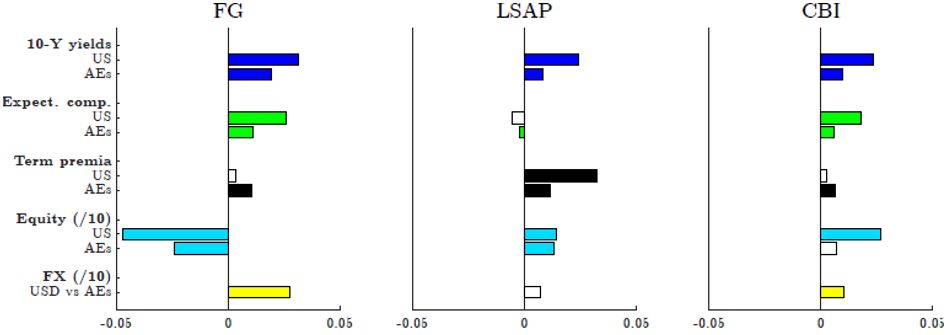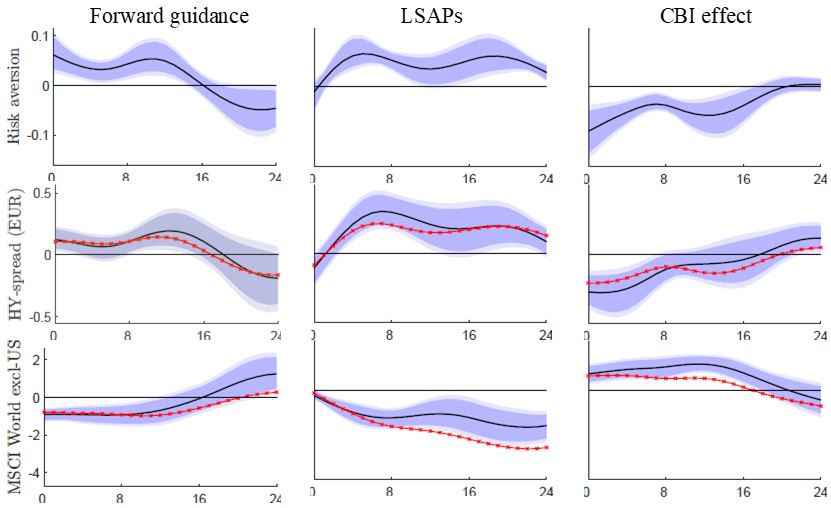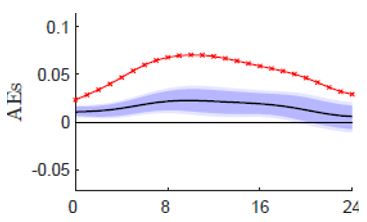References
Adrian, T., Crump, R., Moench, E., 2013. Pricing the Term Structure with Linear Regressions. Journal of Financial Economics 110 (1), 110–138.
Barnichon, R., Brownlees, C., 2019. Impulse Response Estimation by Smooth Local Projections. Review of Economics and Statistics 101 (3), 522–530.
Bauer, M., Swanson, E., 2023. An Alternative Explanation for the “Fed Information Effect”. American Economic Review 113 (3), 664–700. Bekaert et al. (2021).
Bekaert, G., Engstrom, E., Xu, N. R., 2021. The Time Variation in Risk Appetite and Uncertainty. Management Science 68 (6), 3975–4004.
Bertaut, C., Judson, R., 2022. Estimating U.S. Cross-Border Securities Flows: Ten Years of the TIC SLT. FEDS Note February.
Cieslak, A., Schrimpf, A., 2019. Non-monetary News in Central Bank Communication. Journal of International Economics 118 (C), 293–315.
Cochrane, J., Piazzesi, M., 2002. The Fed and Interest Rates – A High-Frequency Identification. American Economic Review 92 (2), 90–95.
Degasperi, R., Hong, S., Ricco, G., 2020. The Global Transmission of US Monetary Policy. Warwick Economics Research Paper Series 1257.
Georgiadis, G., Jarocinski, M., (2023), Global Spillovers from Multi-dimensional US Monetary Policy, ECB Working Paper 2881.
Gertler, M., Karadi, P., 2015. Monetary Policy Surprises, Credit Costs, and Economic Activity. American Economic Journal: Macroeconomics 7 (1), 44–76.
Gourinchas, P.-O., Ray, W., Vayanos, D., 2022. A Preferred-Habitat Model of Term Premia, Exchange Rates, and Monetary Policy Spillovers. CEPR Discussion Paper 17119.
Greenwood, R., Hanson, S., Stein, J., Sunderam, A., 2023. A Quantity-driven Theory of Term Premia and Exchange Rates. Quarterly Journal of Economics 138 (4), 2327–2389. Gürkaynak, R., Sack, B., Swanson, E., 2005a. Do Actions Speak Louder Than Words? The Response of Asset Prices to Monetary Policy Actions and Statements. International Journal of Central Banking 1 (1), 55–93.
Gürkaynak, R., Sack, B., Swanson, E., 2005b. The Sensitivity of Long-term Interest Rates to Economic News: Evidence and Implications for Macroeconomic Models. American Economic Review 95 (1), 425–436.
IMF, 2020. Toward an Integrated Policy Framework. IMF Policy Paper 2020/046.
IMF, April 2021. World Economic Outlook.
Jarocinski, M., Karadi, P., 2020. Deconstructing Monetary Policy Surprises: The Role of Information Shocks. American Economic Journal: Macroeconomics 12 (2), 1–43.
Jarocinski, M., forthcoming. Estimating the Fed’s Unconventional Policy Shocks. Journal of Monetary Economics.
Krishnamurthy, A., 2022. QE: What HaveWe Learned? Presentation at the Princeton Online Seminar, Markus’ Academy, March 24, 2022, Stanford University GSB.
Kuttner, K., 2001. Monetary Policy Surprises and Interest Rates: Evidence from the Fed Funds Futures Market. Journal of Monetary Economics 47 (3), 523–544.
Lewis, D., forthcoming. Announcement-specific Decompositions of Unconventional Monetary Policy Shocks and Their Macroeconomic Effects. Review of Economics and Statistics.
Lunsford, K., 2020. Policy Language and Information Effects in the Early Days of Federal Reserve Forward Guidance. American Economic Review 110 (9), 2899–2934.
Martinez-Garcia, E., Grossman, V., Mack, A., 2015. A Contribution to the Chronology of Turning Points in Global Economic Activity (1980–2012). Journal of Macroeconomics 46, 170–185.
Miranda-Agrippino, S., Rey, H., 2020. U.S. Monetary Policy and the Global Financial Cycle. Review of Economic Studies 87 (6), 2754–2776.
Miranda-Agrippino, S., Rey, H., 2022. The Global Financial Cycle. In: Handbook of International Economics. Vol. 6. Elsevier, pp. 1–43.
Miranda-Agrippino, S., Ricco, G., 2021. The Transmission of Monetary Policy Shocks. American Economic Journal: Macroeconomics 13 (3), 74–107. Swanson, E., 2021. Measuring the Effects of Federal Reserve Forward Guidance and Asset Purchases on Financial Markets. Journal of Monetary Economics 118 (C), 32–53.
Reis, R., McMahon, M., Ellison, M., Ilzetzki, E., Den Haan, W., 2016. The Future Role of Unconventional Monetary Policy: CFM Survey Results. VoxEU Column May.









